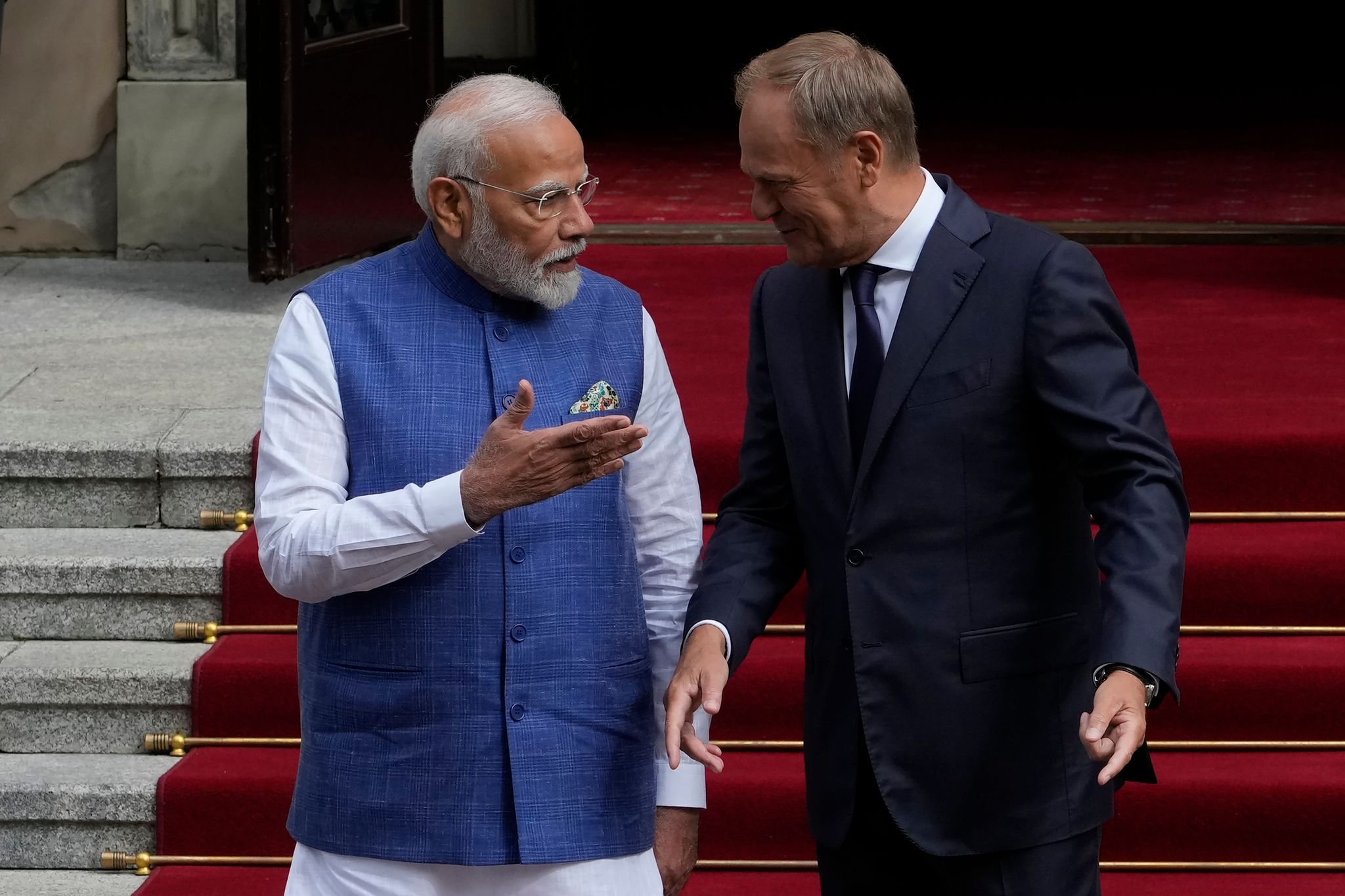Neighboring countries as role models?
Austria and Denmark took the difficult path of asylum and also relied on tricks
Today, September 26 2023 | 15:54
Although migration numbers have risen sharply in Germany, other EU countries have put the brakes on and reversed the trend. For example, the number of cases in Denmark, our neighbor to the north, is at an all-time low. In the first five months of 2023, 1,048 asylum applications were registered in Denmark. In Germany there were 125,566 initial applications plus 10,395 follow-up applications at the end of May. Although Denmark is 15 times smaller than Germany in terms of population and has much smaller land borders, the differences are stark.
Another example is Austria: According to government figures, the number of asylum seekers there fell by 30 percent in the first half of 2023 compared to the same period last year. Overall, fewer asylum seekers came to Austria in the first six months than left the country. There is talk of around 23,000 compared to 28,000. This has not worked in Germany. What is different in neighboring countries?
Denmark: Social Democrats with a tough road
The head of the Danish government and leader of the Social Democratic Party, Mette Frederiksen, has walked a difficult path. This includes, for example, a maximum of 30 percent of “non-Western” migrants being allowed to live in so-called vulnerable areas, where education levels are low but unemployment and crime rates are high. The aim of the Danish Social Democratic Party is to promote integration and prevent parallel societies through better mixing. To achieve this, the government, if necessary, will carry out forced relocation of communities.
In addition, rejected asylum seekers must stay in “return centers” as long as deportation is not possible due to the security situation in their country of origin, although judgments about what is safe and what is not are fundamentally different from those in Germany. one: Syrian territory is considered safe Nobody in Germany currently claims this. The Social Democratic Party has also supported a controversial “jewellery law” since 2016. This means that assets of asylum seekers at the border could be confiscated to cover costs.
Criticism from experts
The Danish government has signed an agreement with Kosovo to imprison migrants who commit criminal offenses in Denmark. After serving their sentence, they must then be deported directly to their country of origin. Kosovo’s prisons primarily function as a deterrent. The same also applies to a law passed by the Danish Parliament in 2021, which provides a legal basis for outsourcing the entire asylum process to third countries in the future. Asylum seekers should be taken to an African country, wait out the asylum procedures there and, if the decision is positive, be allowed to live and work in that country. However, these plans are currently not being implemented. This may still be intimidating.
Advertisement
However, there has also been much criticism of the Danish model and its possible transfer to Germany. Migration expert Raphael Bossong of the Science and Politics Foundation (SWP) said: “The idea that people will stop coming if you make them feel uncomfortable here is too simplistic.”
Austria: Fast asylum procedures and border controls
The strategy in Vienna looks different, but it also seems to be working in line with the government’s interests. According to its own statements, the country relies on fast asylum procedures, border control at home and abroad, the fight against smuggling crimes, increased deportations, the use of innovative technologies in border protection and international cooperation.
In Austria, express procedures are increasingly performed and must be completed within 28 days. There are also urgent procedures that must achieve results within 72 hours. For comparison: In Germany there are some expedited procedures in arrival centers, but the average duration of procedures in 2022 is 7.8 months.
Some 130 Austrian police officers were deployed in Serbia, Hungary and North Macedonia to strengthen border protection. In addition, Austria’s border control measures with neighbors Hungary and Slovenia were expanded. To make the work of Austrian border guards easier, the units are equipped with night vision cameras and thermal imaging cameras. Apart from that, 300 drone systems were used. For comparison: Germany has only two drones used for border protection in 2021. Austrian border guards recently started using so-called heartbeat sensors to check trucks.
Vienna is a trick: the numbers must be treated with caution
Vienna exerts diplomatic pressure on countries that allow smugglers to carry out their work. In particular, the Austrian Interior Ministry mentioned the end of visa freedom for people from India and Tunisia in Serbia and the return agreements with India and Morocco. Last year, 19,500 irregular migrants came to Austria from India via Serbia, most without visas. Working closely with the EU Commission, the Serbian government is under pressure with economic and political sanctions. With success: Serbia adapted its entry rules for countries such as India and Tunisia.
However, the figures published by the Austrian Ministry of the Interior should be taken with caution. Chancellor Karl Nehammer’s government, which belongs to the conservative ÖVP, is under huge pressure from the right-wing FPÖ, which is gaining ground in opinion polls, similar to Germany’s AfD. Therefore, the government in Vienna is making every effort to signal that it is “taking action”, especially in migration policy. The official figures provided by Statistics Austria use slightly different language. After that, the number of asylum grants in Austria will also increase in 2023 for the third consecutive year and is expected to reach 16,100. This is the highest value since the refugee crisis that Austria had to overcome in 2015/2016.
The article “Austria and Denmark take the difficult path of asylum and also rely on tricks” comes from Europeans.

“Subtly charming web junkie. Unapologetic bacon lover. Introvert. Typical foodaholic. Twitter specialist. Professional travel fanatic.”

;Resize=(1200,627)&impolicy=perceptual&quality=mediumHigh&hash=a7f116352388ec083765024ca5e4e34c2665ef974091a93c45d5434f1da136c1)





